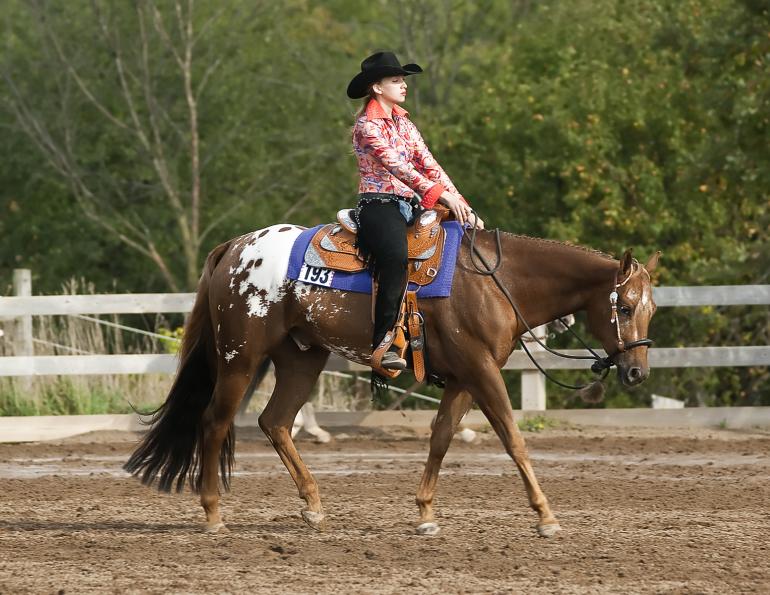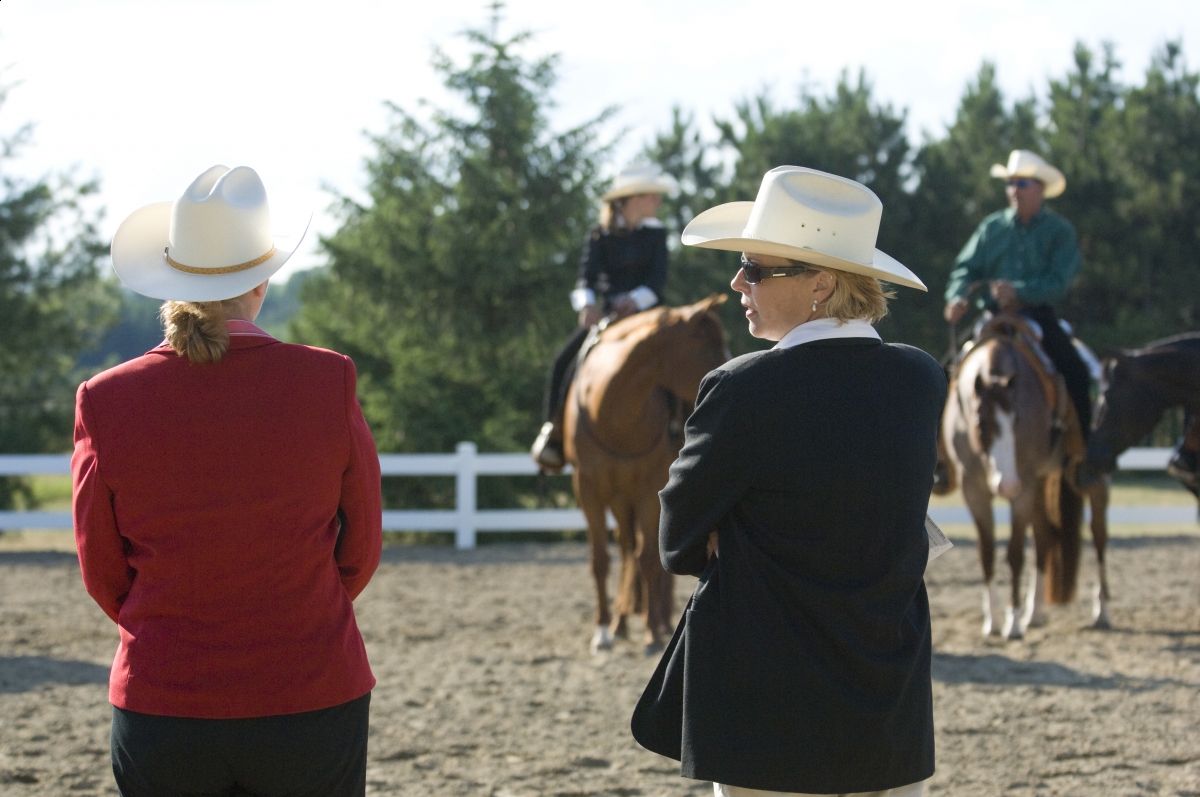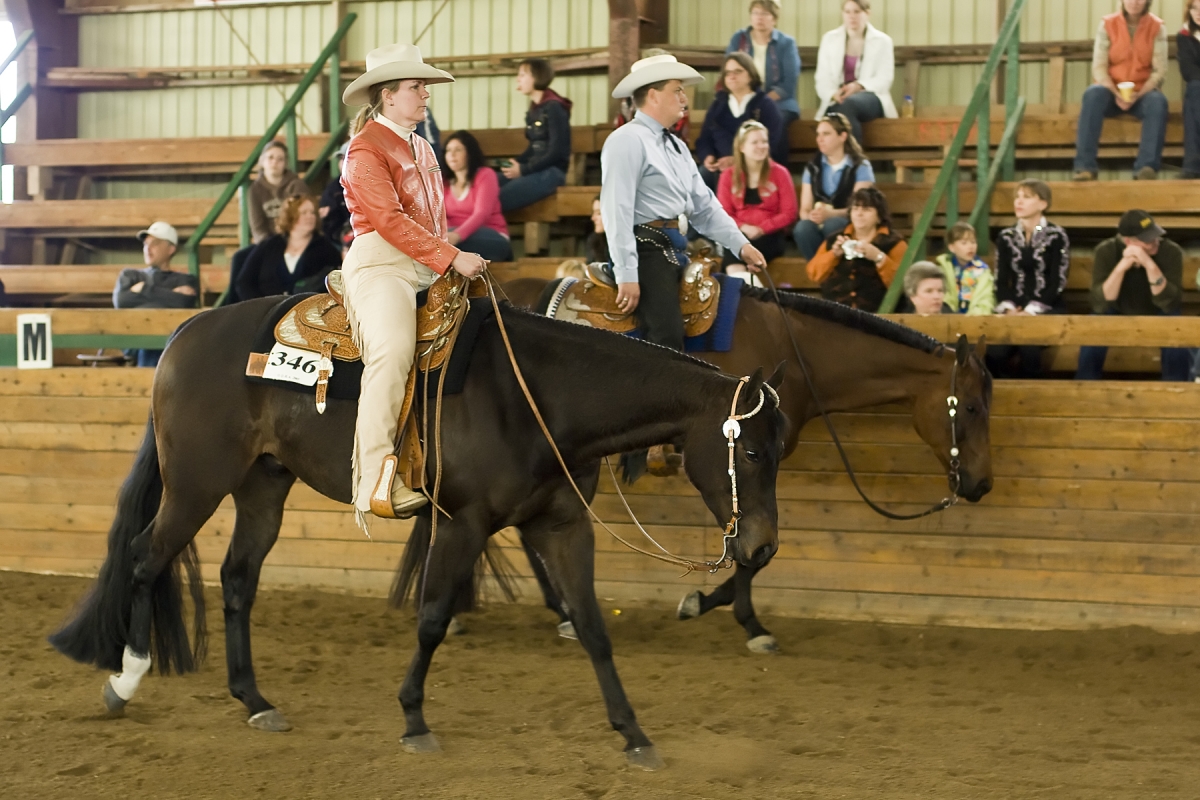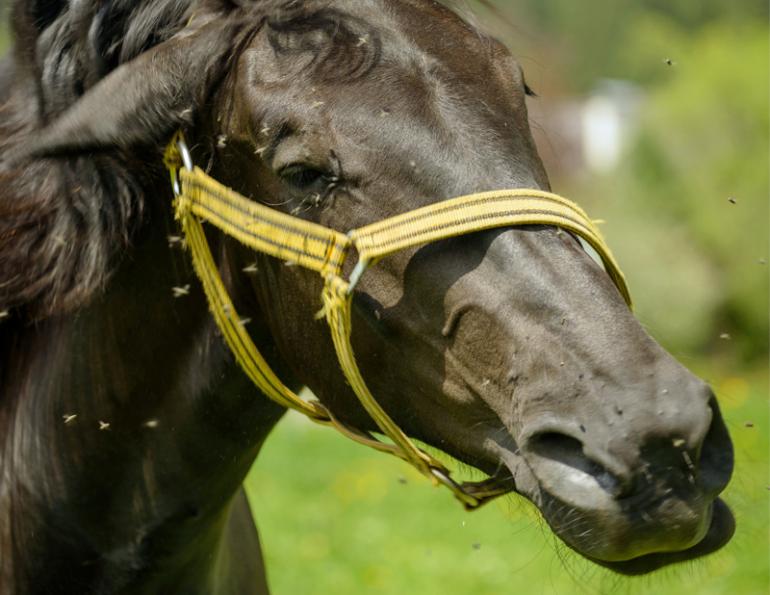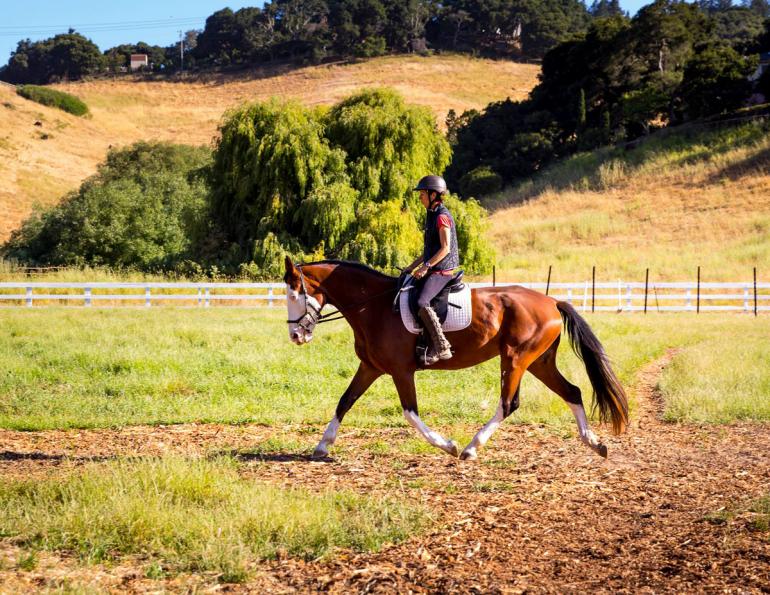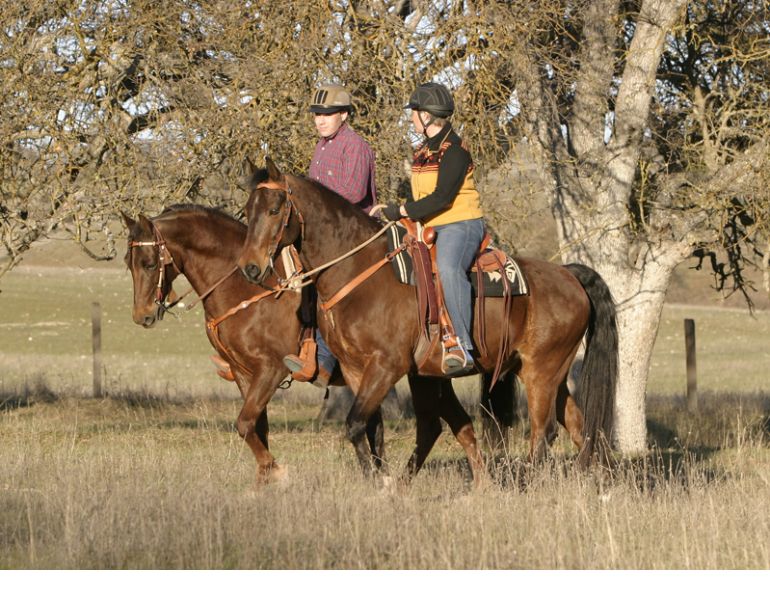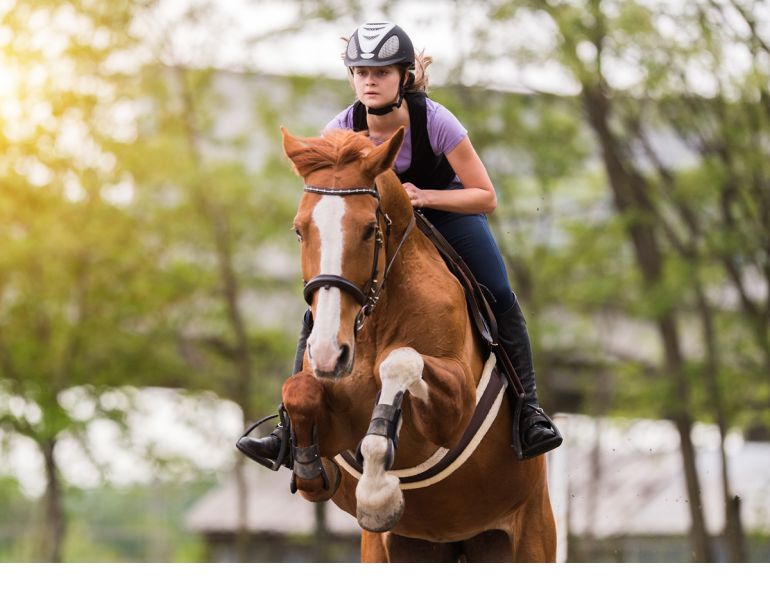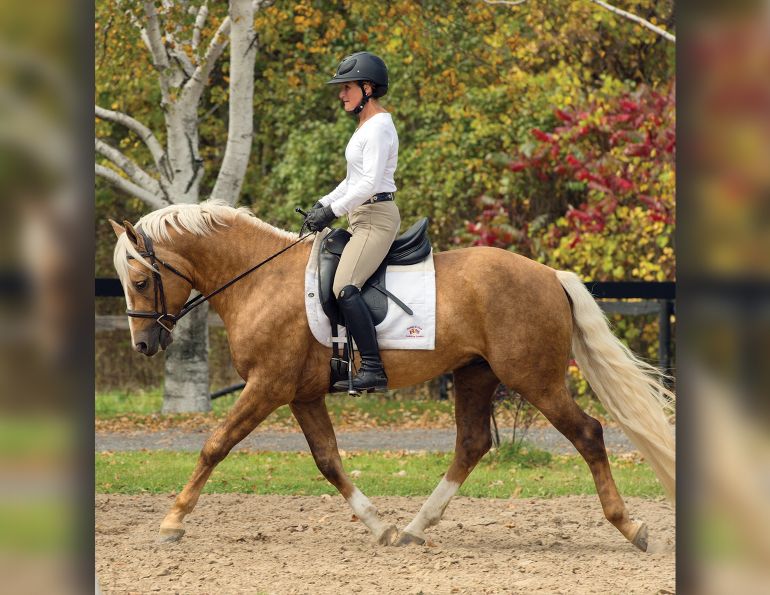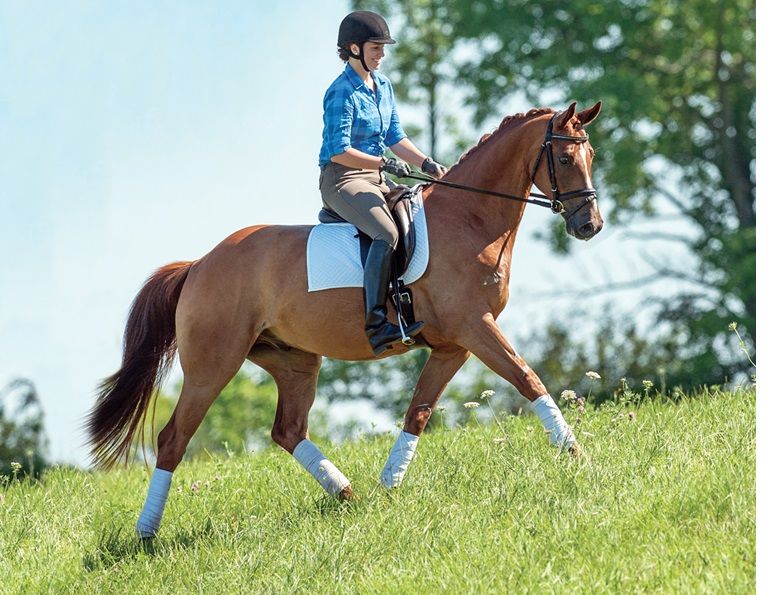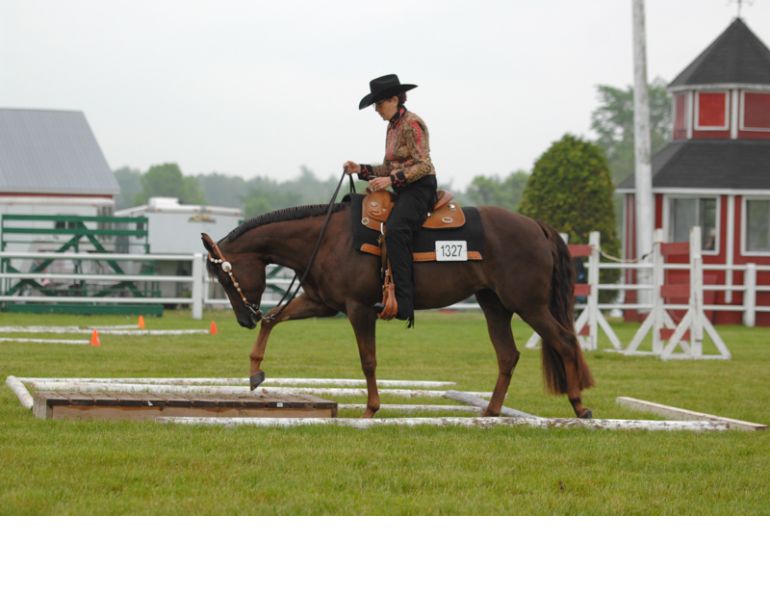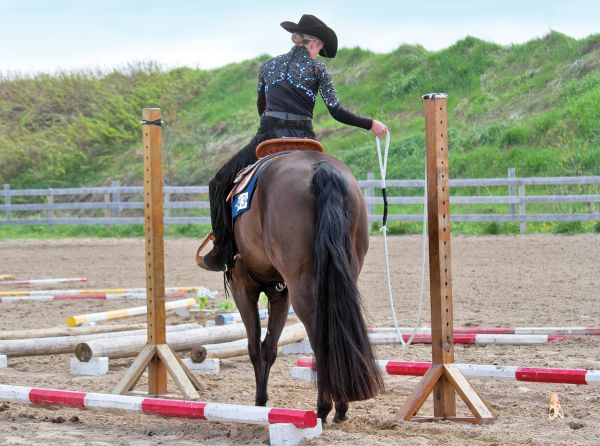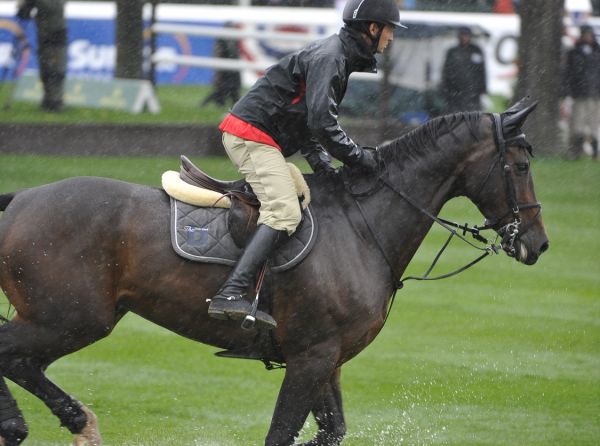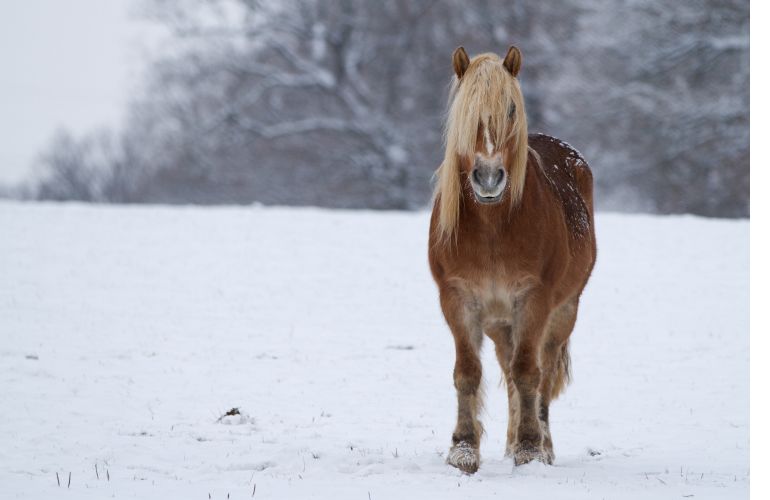By Lindsay Grice
Popularity and controversy often go hand in hand. We both love and hate our celebrities and politicians — whatever the case, we love to talk about them!
Similarly, the Western pleasure class, while historically the most popular class in the stock horse breeds, comes with its share of criticism.
In my travels as a clinician, I am regularly “talking horse” with equestrians from various disciplines. Knowing that I judge and compete within the American Quarter Horse Association (AQHA) circuit, the subject of Western pleasure often comes up with the dressage, hunter, and jumper riders in my clinics.
No discipline is without its fads and extremes. Dressage, show jumping, and gaited horses have all been accused of unethical practices and “unnatural” training techniques.
In reality, everything we do with horses is unnatural. I’m quite sure that any horse would rather be out on pasture eating grass than loping around a Western pleasure ring or doing piaffe, a sliding stop, or barrel racing pattern.
Most horse people admire the calmness and manners expected by competitors in the Western disciplines. This was one of the factors that attracted me years ago to the Quarter Horse circuit and I have carried over this level of respect and focus into the teaching and training I do with all horses and riders. In the Western world, whether it’s reining, Western horsemanship, or competitive trail, mistakes matter. Judges penalize poor attitude or variance in straightness, stride, or frame. Consistency and accuracy is prized on par with quality movement.
So if calm and mannerly is good, even more calm and mannerly to the point of robotic must be better, right?
That was the swing that Western pleasure took in the 1980s.
Joe Carter, AQHA director and one of the association’s most respected judges, shared his thoughts with me: “Sometimes I dreaded getting called to judge in some areas. I knew that Western pleasure here would be terrible — too carried away and there’d be a lot of pressure on me. At one show I placed just three horses. The others were too low and too extreme.”
|
Photo: ChristinaHandleyStock.com |
In an effort to produce a horse that was the picture of composure, exhibitors presented horses with their heads below the level of their withers, on a draped rein, at an ambling pace. I was just making the move from the hunter/jumper circuit into the Western disciplines at this time and I was puzzled to see sullen “peanut rollers” placing at the top of the class, while showing off their four beat lope.
“During this period of these fads we lost the horse’s movement, getting caught up in the idea of ‘the slower, the better,’” said Christine Little, a Decker, Manitoba Quarter Horse breeder and AQHA specialized judge. “Suddenly horses went from being natural movers to these mechanical looking animals, dragging their heads, loping down the ring sideways, and not truly loping as a result. Trainers were making Western pleasure twice as hard on themselves and the horses since we were changing so much of their natural way of going. I believe there was a time that the horses were forgotten about and it suddenly became a competition to see who the best trainer was, who could create the best ‘robot’ so to speak. Then suddenly everyone took a step back, or maybe listened to the outsiders’ criticisms, and said ‘wow, our horses really are not moving like horses anymore.’”
Trends and Changes
Among stock horse breeds, the AQHA has been the consistent leader of the pack with the others close on its heels in terms of guidelines and revisions. Each year upon receiving my handbook I scan the pages for the underlined rule changes. They are always plentiful, and many of them over the past decade have pertained to Western pleasure. Amendments have been quick to put out the fires of undesirable fads, such as:
|
Photo: Robin Duncan Photography |
Headsets (even the word grates on me!). In an effort to display the submissiveness of the pleasure horse, head carriages became so low that they were a picture of subservience. The term “peanut rollers” was fitting for these competitors. Rule changes followed, stating that horses shown with their ears below their withers or noses behind the vertical would be disqualified.
Four beating. The walk, jog, and lope lost their natural cadence and slowed to a crawl. Normally a three beat gait, the lope gained a beat and lost any suspension at all. It deteriorated to a flat shuffle which would result in most horsemen calling the vet if seen out in the pasture.
Gaits became slower as competitors made every effort to lay claim to the rail, never to pass the horse in front. When a gait transition was called, judges endured a long delay before someone was brave enough to initiate, which inevitably necessitated pulling out to the inside lane.
“Sometimes as a judge you have to do things to make them show their horses. At one large show I chose not to cut a large Western pleasure class so the riders would have to get out and pass,” Carter recalled. “At another I had to keep calling for more extension until they got up to speed. The people were just about ready to hang me, saying ‘What are you doing to the Western pleasure?’ ‘That ain’t Western pleasure,’ I said. I like a good challenge.”
In 1991, AQHA responded with a rule that penalized excessively slow gaits, followed by rules that required forward motion and prompt transitions when called for.
Like a gun at an arcade, the stock horse associations have shot at the fads of overly canted hips, illegal drug use, unnatural tails, overused spurs, and underweight horses.
The challenge has been to get the judges, many of whom also compete, to get on board and enforce the rules. At recent judging conferences I’ve attended, we have been reminded to judge by the specifics in the handbook and watched videos depicting both unacceptable and breathtakingly beautiful moving Western pleasure horses.
Carter has been on task forces and educational committees to address the problem and advise the judges. “It’s at the little weekend shows we tend to have the most problems. Since we’ve been monitoring the big shows — the Quarter Horse and Appaloosa World Championships, for instance — things have really improved. The classes are videoed and the judges are given guidance before the shows. Our aim is that these shows will set the standard for the weekend shows.”
How did we get caught up in this stuff?
Ontario Appaloosa Association president and trainer, Kris Simpson, shed some light on this. “I think a lot of the fads Western pleasure has endured come from the quest to go slow on a loose rein. People will always try new trends to try to reach what they think is a good result. Unfortunately this is not always so. I myself have always tried to maintain proper movement and not be too trendy, but it is very easy to fall into the trap of copying what you see. [Each negative trend] was a result of that quest.”
|
Photo: River Bend Designs |
Her husband, AQHA judge Jamie Simpson, feels that many negative trends resulted when people with less talented horses tried to copy the more talented horses and put them into a box they weren’t meant to be in.
As a trainer and coach, I understand the pressure to “produce.” Staying power in the industry depends on one’s ability to have your horses in the winner’s circle. Clients have a lot invested in their horses and many expect results. Missing training deadlines for the big shows costs the owner in entry fees paid up front. Ambition and simple financial survival motivate people to push the limits of good sense.
Trainers Jason Duquette and Suzanne Pickard based in Bothwell, Ontario, focus on the bigger US events. “Futurities are becoming more popular because there is a chance to profit. There is higher money at stake so people are striving to find the best movers to compete. [Futurities] are attracting a lot of money and have higher entry fees which (unlike shows like a weekender or even the Congress) eliminate the person that just comes to ‘show their horse for fun.’ These people don’t spend hundreds of dollars for one class to just ‘show their horse for fun.’”
Still Popular
Because of the specialization of the Western pleasure horse and the questionable techniques to produce a winner, many of my amateur clients have opted for the “all-around” route. Classes offered at stock horse shows include English divisions, showmanship, Western riding, trail, and horsemanship. In pattern events, a horse that lacks the quality movement or compact stride of a pleasure horse can still be competitive.
However, Western pleasure remains one of the more popular events at most shows.
The pace of the Novice Western pleasure tends to be more up-tempo, and some riders make their debuts in this class, where there’s no pattern to memorize and they don’t have to be alone in the spotlight.
Kris Simpson said, “It’s a good starter class for beginning horses and riders with no patterns or obstacles.”
Breeder Christine Little stated, “Maintaining this same entry level perspective, we see those that may not be the most talented Western pleasure horses still competing in these classes to gain experience in the pen. I believe it is also a way for people to promote their horses to horsemen who may watch a pleasure class to pick out the prospects — those horses who may not win the pleasure but look like they will be excellent horsemanship, trail, Western riding, or all-around horses.”
At the big shows, it’s still Western pleasure that draws the crowd.
Suzanne Pickard observed, “With several purses of over $100,000 to the winner per year, people want to participate, whether it is buying, owning, showing, or spectating. It’s something to get involved in. It’s entertainment! And that is a key factor in making something popular. It has to be entertaining.
“These bigger shows are changing the horse world. They are trying to make it fun and drawing spectators and exhibitors through novelty events and games that are played after classes, with prizes given away. Evenings are filled with high dollar slot classes, auctions, and fundraisers.”
Looking Ahead
Much has changed since those early days when this English rider scratched her head and wondered, “What could be so pleasurable about this class?”
Jamie Simpson observed that, “The Western pleasure class has been through some major changes since the 80s. Gone are the days of four beating and skinny horses. We see the pleasure horse continuing to move in a more natural way. With the inhumane treatment rules that the associations have implemented, much of the abuse is being kept away from the show ring and trainers are being reported for what they do at home. Trainers are having to use new and improved training methods to prepare these horses for competition.”
Jamie’s wife, Kris, added, “The Western pleasure industry has taken hits from outside our industry that aren’t warranted. Issues develop in all aspects of the horse industry but they are not at the forefront like Western pleasure, therefore I think we get picked on more often. Not everyone should be a trainer. One bad display hurts the entire industry. There have definitely been things to criticize, but the industry is improving. When someone is trying to change it takes time — it can’t be immediate.”
Main article photo: River Bend Designs - While the Western pleasure horse should be calm and mannerly, it’s also important he have quality movement that is cadenced and straight.



